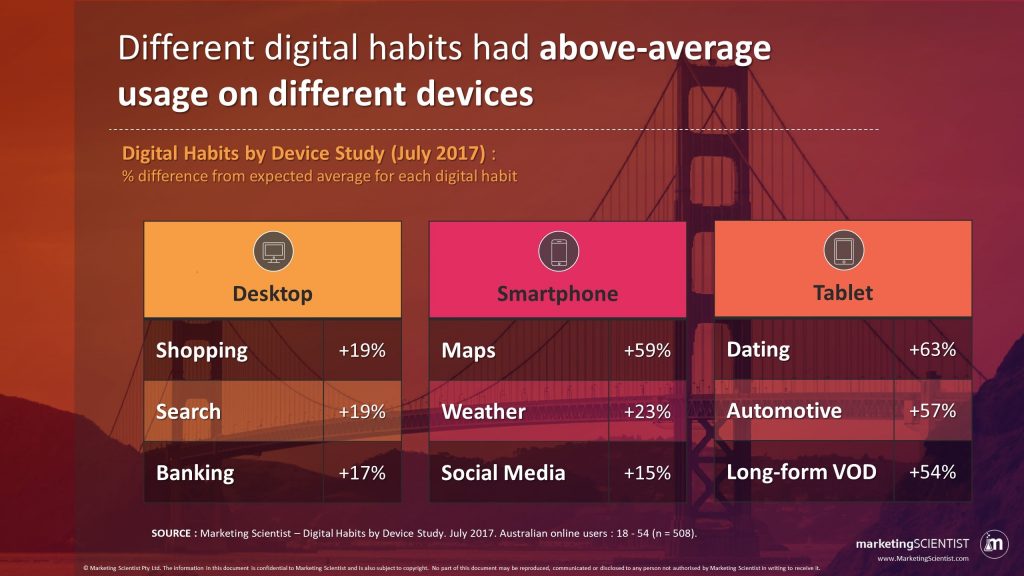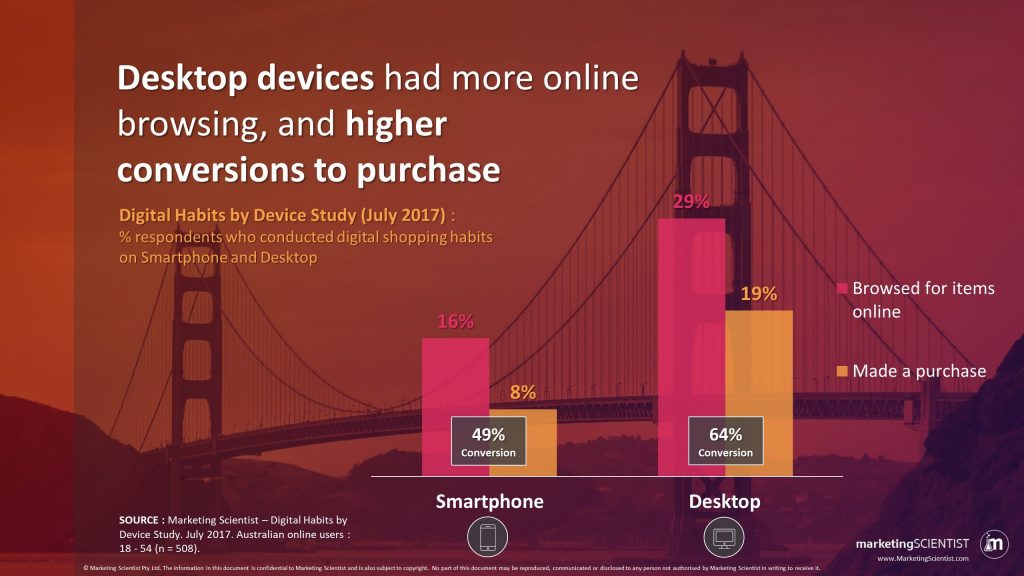Don’t forget desktop in your e-commerce strategy

A few weeks ago, I had a conversation with a potential client about their digital strategy. They told me they were going to focus purely on mobile, as desktop (e.g. PC / Laptops) was dead, and investing in old technology would be a waste of time and money.
Such a view is not unsurprising. We are constantly told to be ‘mobile first’, and there is evidence to show that PC sales are in decline. But does this mean that desktop is dead, and we should no longer focus on it?
Do people still use desktop devices?
While mobile usage in Australia is growing, this doesn’t mean that people no longer use desktop. Looking at recent trend data from the Nielsen Digital Landscape Report, we see that more Australians used a desktop (17.9 million) device to access the Internet in July 2017, compared to smartphones (14.2 million) and for tablets (7.5 million). Interestingly, this report also shows that despite the sales decline, desktop monthly reach is only down 1.5 per cent in the last 12 months.
Importantly, this independent measurement captures people across all websites and apps, unlike most web/mobile analytics solutions that measure devices or cookies.
How does device usage vary by category?
We recently conducted a study that similarly measured people across devices and digital habits on a typical day. While the main activities (search, email and social media) were widely used across all devices, there were also notable differences.
The following table shows the differences in usage by device, as compared to the average. Here we see that maps, weather and social media had above-average usage on smartphones; dating, automotive and long-form VOD (e.g. Catch-up TV or SVOD) consumption was above-average for tablets; and shopping, search and banking was above-average for desktop.

Given that many digital businesses rely on e-Commerce for revenue, the result for online shopping was particularly interesting. Looking at this data in more detail, we saw that people not only browsed online more via desktop devices, but there was a higher conversion rate (‘made a purchase’).

Our data is also supported by a recent study of US Internet users, which showed that more online shoppers completed their purchase on desktop, compared to mobile, regardless of whether they started their purchase journey on desktop, mobile or even in-store.
Does this mean I should focus on desktop instead of mobile for eCommerce?
Not at all! Mobile will continue to be an important device for many businesses as penetration levels continue to climb, and mobile internet speeds/data packages increase. But just because 86 per cent of Australians (14+) have access to a smartphone device, doesn’t mean they want to use it for all online activities.
The key message here is to invest in where your potential customers are. As the most common device in monthly reach, some customers may only access you from desktop (or in certain situations like ‘completing a purchase’), and similarly, some customers may only access you from mobile. To exclude one of those devices will exclude those customers.
From this we can conclude that desktop is still very much alive and well, and remains essential to the digital strategies for many businesses, including those in e-Commerce. As the famous saying goes, “the future is purchased by the present”, so it is important not to short-change certain devices in your strategy now, as they will impact your future e-Commerce success.
Comment Manually
You must be logged in to post a comment.

No comments